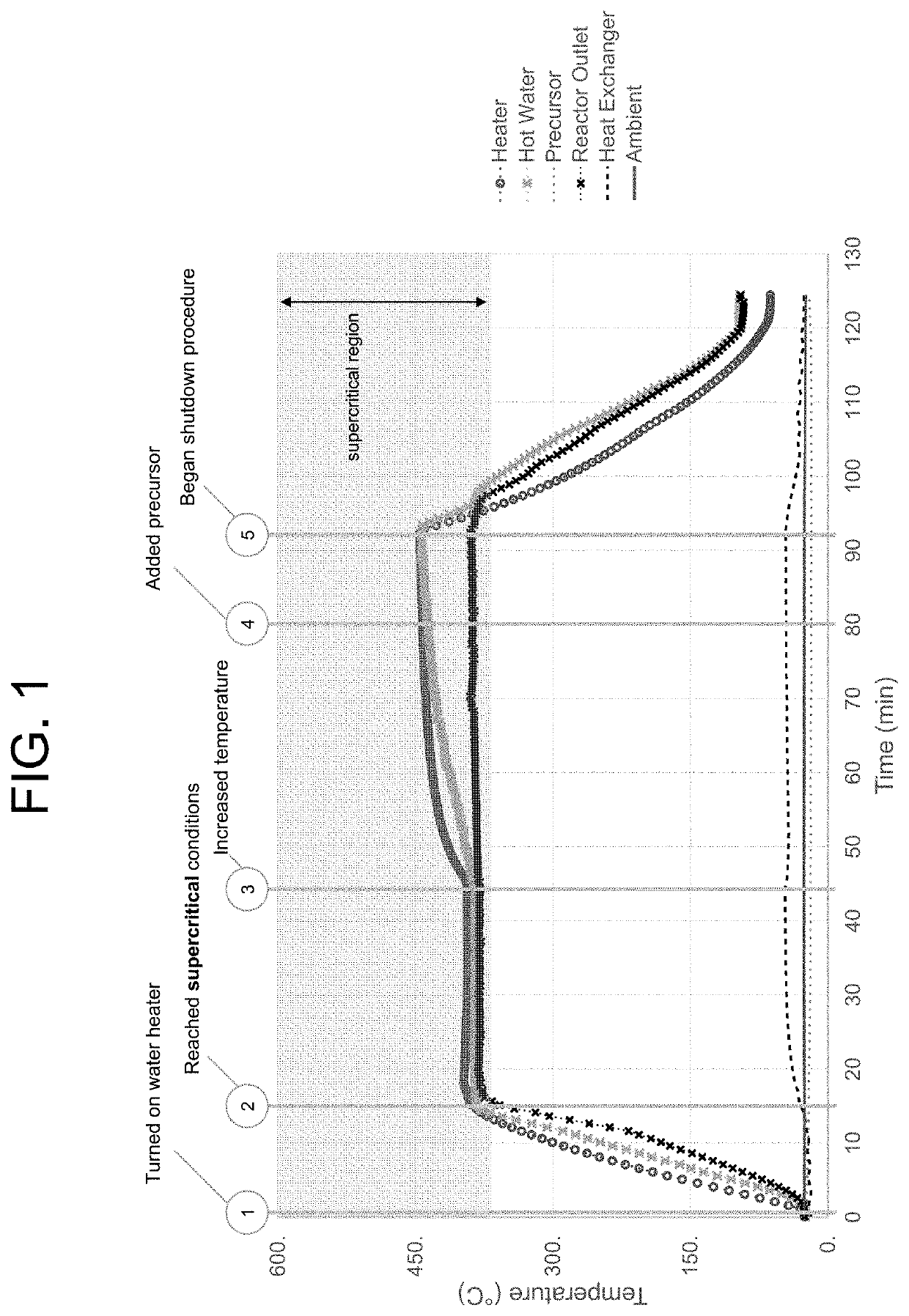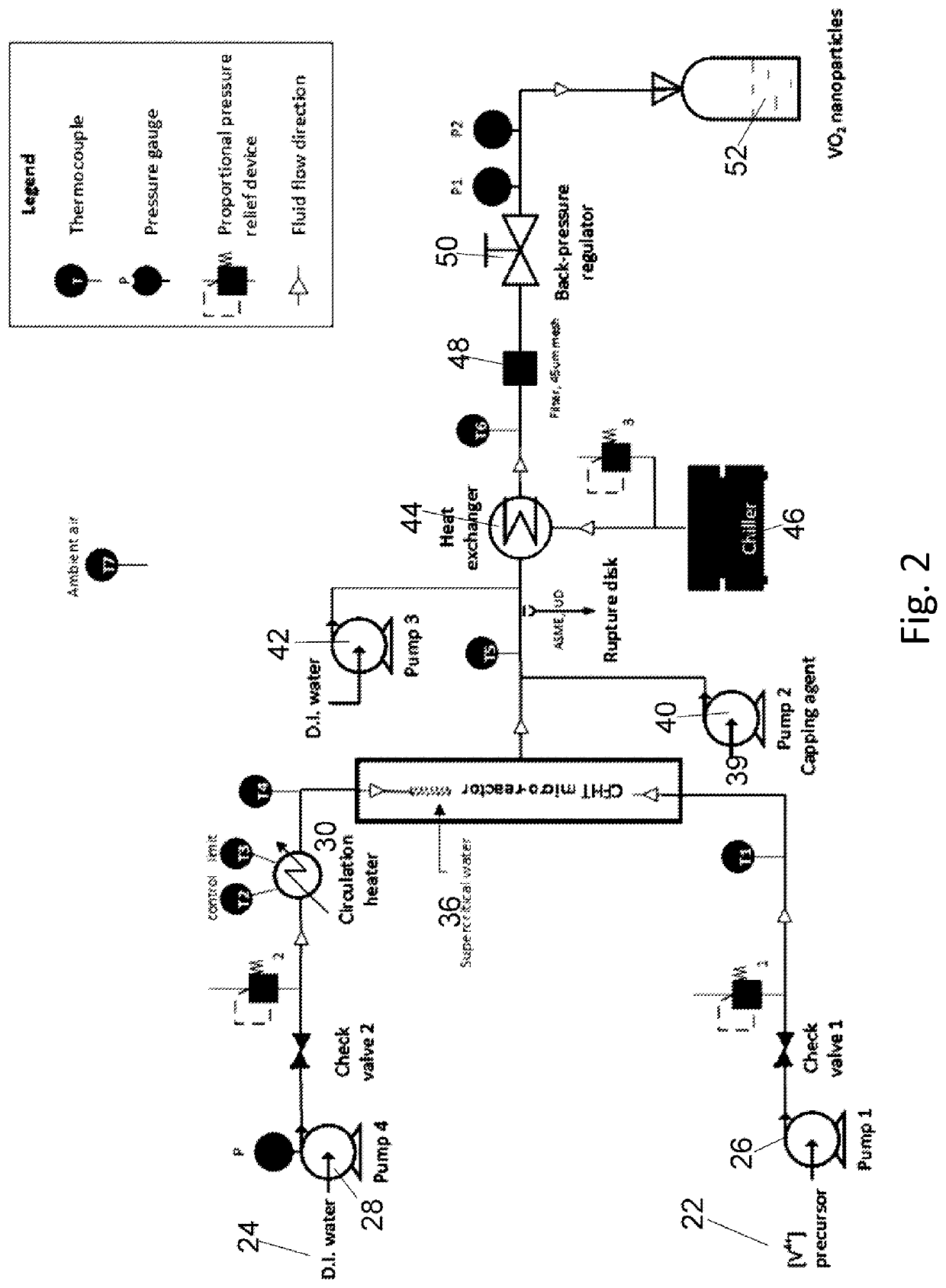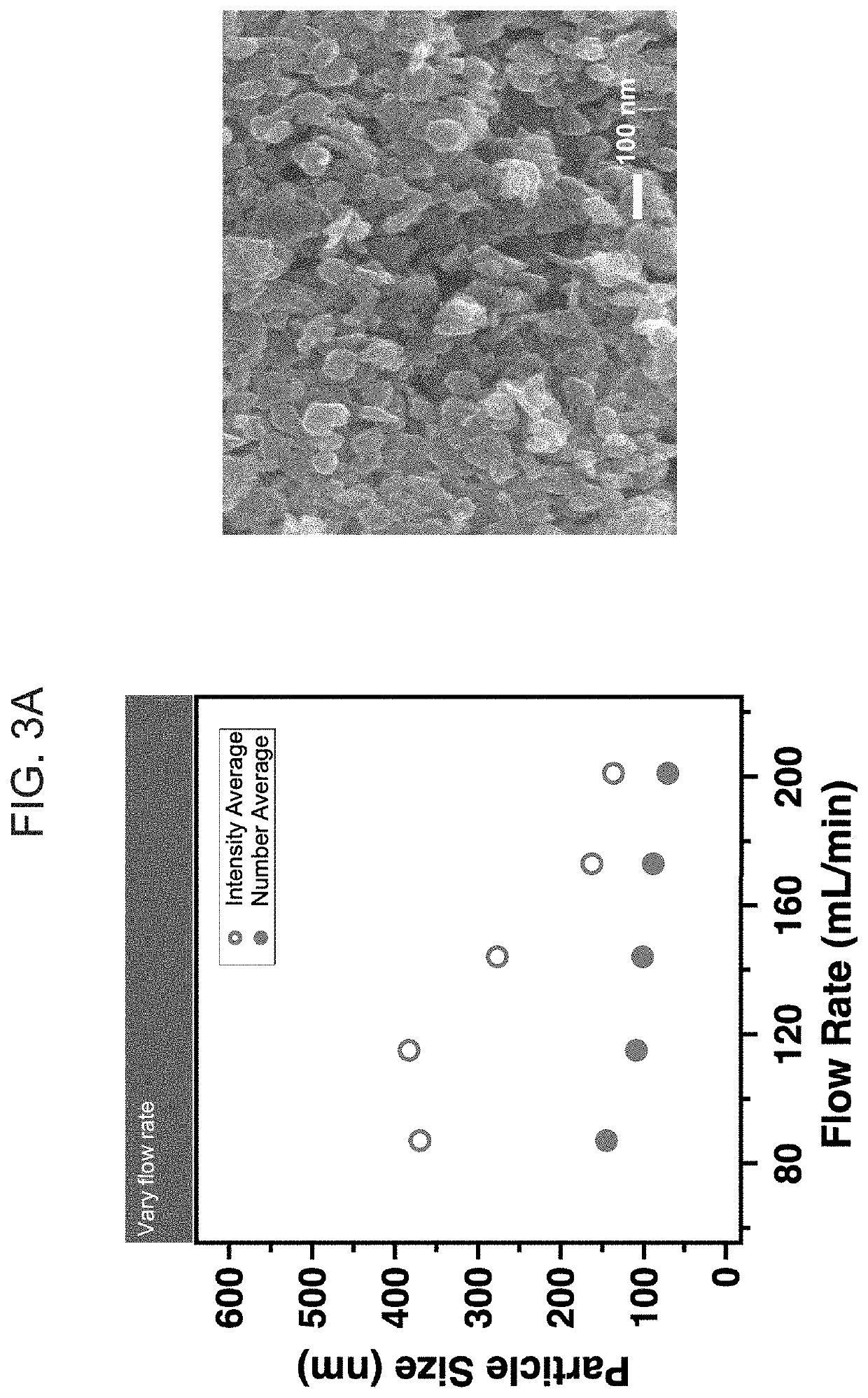Process for rapidly manufacturing ultrasmall phase-change vo2 nanomaterial
a nanomaterial and phase-change technology, applied in the field of organic nanoparticles, can solve the problems of poor material quality control, potential explosion hazards, and tepid adoption of these materials, and achieve the effects of reducing product cost, facilitating product-water separation, and small nanoparticles
- Summary
- Abstract
- Description
- Claims
- Application Information
AI Technical Summary
Benefits of technology
Problems solved by technology
Method used
Image
Examples
example
[0123]Reaction conditions for an exemplary bench top continuous flow hydrothermal core-shell particle fabrication system include a ½″ OD tubing micro-reactor, approximately 36 cm in length, with other inlet and outlet tubing of ¼″ OD. An HPLC pump is utilized to drive the precursor fluids through the mixer and micro-reactor while another diaphragm pump is utilized to pump water into the heater and micro-reactor. A stainless steel tube reactor operated under 400° C. and 240 bar may be utilized as the flow micro-reactor. A heat exchanger in fluid communication with the loop is utilized. A back pressure regulator is used to tune and maintain the system pressure. Optionally, a safety relief valve or rupture disk is provided with a maximum pressure setting of 270 bar.
[0124]The starting reagent for the experiments was a 0.0356M [V4+] precursor solution made using 1 mol vanadium pentoxide (V2O5, 1.29 g) to 3 mol oxalic acid dihydrate (C2H2O4.2H2O, 2.69 g). The solid powders were mixed with...
PUM
| Property | Measurement | Unit |
|---|---|---|
| size distribution | aaaaa | aaaaa |
| diameter | aaaaa | aaaaa |
| diameter | aaaaa | aaaaa |
Abstract
Description
Claims
Application Information
 Login to View More
Login to View More - R&D
- Intellectual Property
- Life Sciences
- Materials
- Tech Scout
- Unparalleled Data Quality
- Higher Quality Content
- 60% Fewer Hallucinations
Browse by: Latest US Patents, China's latest patents, Technical Efficacy Thesaurus, Application Domain, Technology Topic, Popular Technical Reports.
© 2025 PatSnap. All rights reserved.Legal|Privacy policy|Modern Slavery Act Transparency Statement|Sitemap|About US| Contact US: help@patsnap.com



